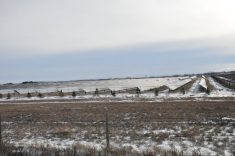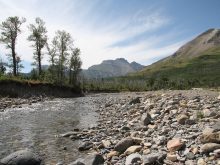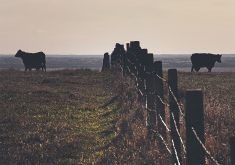Alberta Premier Danielle Smith and other politicians that like making things up to support their worldview have frequently stated that the wildfires ravaging our cities, towns and wilderness areas are being set by arsonists.
The truth is that in any given year, arson is responsible for between five and 10 percent of wildfires, but these arson fires account for much less than one per cent of the total wildfire damage.
Although the statistics vary widely from year to year, careless human behavior results in half the wildfires in Canada, but lightning is responsible for 85 per cent of the area burned.
Read Also

Invigor Gold variety viewed as threat to condiment mustard
Invigor Gold, the canola-quality mustard developed by BASF, is on a collision course with Canada’s condiment mustard industry. It’s difficult to see how the two can co-exist.
The National Forestry Database tracks the number of fires started each year by cause as well as the area burned by cause. With few exceptions, the really massive fires are a result of lightning strikes.
Perhaps the whole argument of who or what started a wildfire is an intentional diversion from the real cause of these devastating fires. As places like California and Alberta warm beyond their historical averages, the vegetation and soil begins to dry up. This is due to the simple fact that rates of evaporation and transpiration increase with temperature.
Producers in southern Alberta should be cognizant of the drying affect of climate change as multi-year droughts become more severe and more frequent. Winter snowpacks are getting thinner on the Prairies, and these same conditions exist at the headwaters of the province’s agriculture industry.
The Alberta counties of Willow Creek, Vulcan, Lethbridge and Cardston and the Municipal District of Pincher Creek are some of the windiest places in Alberta. The combination of wind, heat and dry conditions drives up the risk of grass fires.
Similarly, the tinder dry forests on the eastern slopes of the Rockies are vulnerable to devastating forest fires.
In 2017, the Waterton Lakes wildfire consumed almost 94,000 acres of forest, a conflagration larger than anything recorded in the park since record keeping began in the 1700s. The fire was so intense that it even burned away the topsoil, ensuring regeneration would be a long process.
Unfortunately, ideology is trumping common sense with Alberta’s current administration. The United Conservative Party understands there is a threat to the province’s water, but it isn’t listening to the scientists that are studying the problem.
The premier points to more irrigation and capturing more snowpack runoff as long-term solutions, even though global warming will result in steadily decreasing snowpack as the climate gets drier and winter precipitation falls in the form of rain.
More irrigation is not a sustainable solution if the water supply continues to decline, nor is the use of billions of litres of critical water resources to wash coal if the UCP is successful in pushing through the Grassy Mountain coal project, which was rejected by federal and provincial regulators in 2021.
“With changes in climate and the many land cover changes that have occurred due to resource extraction, wildfire, insect outbreaks and other successional processes, there is a growing concern that the water resources we have come to rely on over the last century may not be available in the future,” says Chris Hopkinson of the University of Lethbridge.
This is no time to be denying the impact of global warming on Alberta’s water supply and wildfire risk. Blaming the looming problem on arsonists and natural changes in the climate ignores the fact that warming in the last 150 years has been dramatically faster than the normal warming that occurred after we exited the last ice age 24,000 years ago.
Robert Miller is a retired systems engineer, formerly with General Dynamics Canada, who volunteers with the Calgary Climate Hub and writes on behalf of Eco-Elders for Climate Action. He lives in Calgary.





![Protesters crowd a street carrying signs that read, "Global warming real. In other news, water is wet," and "Stop denying the [blue painted pic of the Earth] is dying."](https://static.producer.com/wp-content/uploads/2025/07/29145152/158171_web1_2019-10-18T222818Z_1221762151_RC14C26A65A0_RTRMADP_3_CLIMATE-CHANGE-THUNBERG-1200-220x165.jpg)











